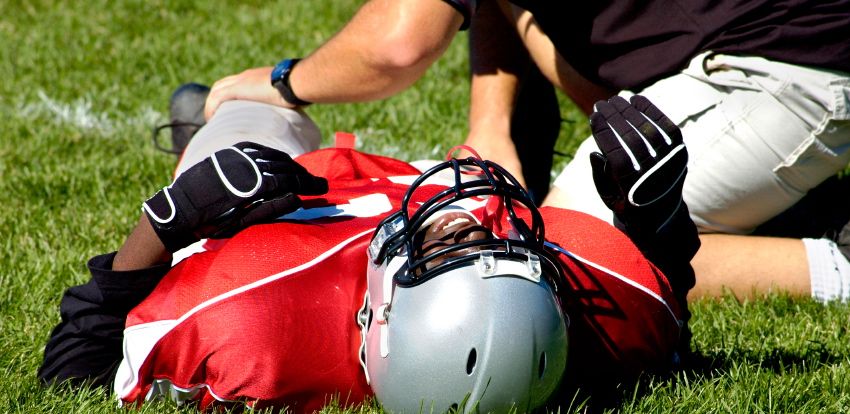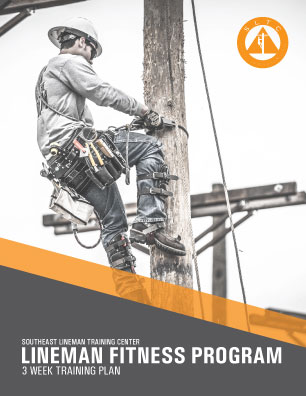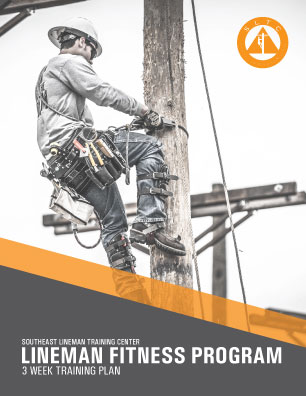Are you considering pursuing a career as a lineman? Well, physical preparedness is a crucial aspect of your journey towards attending lineman school. From climbing poles to working with heavy equipment, lineman work demands a level of strength, endurance, and agility. In this article, we will explore some effective ways to get your body ready for the unique challenges and demands of lineman school, ensuring that you’re in the best shape possible to succeed in this exciting field. So, let’s dive in and discover how to physically prepare for lineman school!

Physical Fitness
Physical fitness is essential for success in lineman school. It’s not only important for your overall health and well-being but also directly impacts your performance and ability to handle the demands of the job. In lineman school, you will be exposed to rigorous physical activities, including climbing utility poles, carrying heavy equipment, and working in various weather conditions. Therefore, it is crucial to prioritize endurance training, strength training, flexibility, mobility exercises, and injury prevention to prepare your body for the challenges ahead.
Endurance Training
In lineman school, you can expect to engage in activities that require sustained effort over an extended period. Endurance training is crucial to improve your cardiovascular endurance, enabling you to perform physical tasks with less fatigue and greater efficiency. Running, cycling, swimming, and jumping rope are excellent endurance exercises that can help condition your heart and lungs, enhancing your overall stamina and endurance levels.
Strength Training
Working as a lineman involves handling heavy equipment and performing physically demanding tasks regularly. Therefore, incorporating strength training into your fitness routine is vital. Weightlifting, bodyweight exercises, and resistance training can help build your muscular strength and power, enabling you to handle the physical demands of the job with ease. By focusing on both upper and lower body strength exercises, you can develop well-rounded strength and minimize the risk of muscle imbalances.
Flexibility and Mobility Exercises
In lineman school, you will often find yourself in positions that require flexibility and mobility, such as reaching overhead or working in confined spaces. Flexibility exercises can improve your range of motion and joint flexibility, enabling you to move more effectively and safely. Incorporating stretching, yoga, and dynamic warm-ups into your fitness routine can help enhance your flexibility and mobility, reducing the risk of injuries and allowing you to navigate challenging work environments comfortably.
Cardiovascular Endurance
Cardiovascular endurance is a crucial aspect of physical fitness for lineman school. It refers to the ability of your heart and lungs to supply oxygen-rich blood to your working muscles during physical activity. Building your cardiovascular endurance is essential for sustaining energy levels throughout the day and performing tasks efficiently. Here are some exercises that can help improve your cardiovascular endurance.
Running
Running is a highly effective exercise for improving cardiovascular endurance. Start by incorporating regular running sessions into your fitness routine. Begin with shorter distances and gradually increase your distance and speed over time. Whether you prefer outdoor or indoor running, it is a versatile exercise that can be adapted to different environments, making it suitable for lineman school preparation.
Cycling
Cycling is another great option to boost cardiovascular endurance. Whether you choose to ride a stationary bike or venture outdoors on a bicycle, it is a low-impact exercise that places minimal stress on your joints. Cycling helps strengthen your leg muscles while simultaneously improving your heart and lung function. Aim for longer rides or interval training sessions to challenge your cardiovascular system.
Swimming
Swimming is a full-body workout that not only builds cardiovascular endurance but also provides excellent resistance for strength training. It is a low-impact exercise that is gentle on the joints, making it suitable for individuals with joint issues or injuries. Incorporate different swimming strokes and intervals into your routine to challenge your cardiovascular system and improve your overall endurance.
Jumping Rope
Jumping rope is a simple yet highly effective exercise for improving cardiovascular endurance. It can be done virtually anywhere and requires minimal equipment. Jumping rope elevates your heart rate and engages multiple muscle groups, making it a great workout for building stamina. Start with shorter intervals and gradually increase your time as your endurance improves.
Strength Training
Strength training is crucial for lineman school preparation as it helps build the necessary muscular strength to handle the physical demands of the job. Incorporating strength training exercises into your fitness routine can enhance your overall power, endurance, and resilience. Here are some key exercises to include in your strength training regimen.
Weightlifting
Weightlifting is a popular form of strength training that uses free weights or weight machines to target specific muscle groups. Compound exercises like squats, deadlifts, bench presses, and shoulder presses are excellent choices for lineman school preparation. They engage multiple muscle groups simultaneously, allowing you to build overall strength and functional fitness.
Bodyweight Exercises
Bodyweight exercises are an effective way to build strength without the need for equipment. These exercises utilize your body weight as resistance, challenging your muscles and improving your functional strength. Push-ups, pull-ups, lunges, and squats are essential bodyweight exercises that target various muscle groups, increasing your overall strength and endurance.
Resistance Training
Resistance training involves using resistance bands, kettlebells, or other equipment to provide additional resistance during exercises. Including resistance exercises in your routine can target specific muscle groups and help develop muscular strength and power. It is important to choose appropriate resistance levels and maintain proper form to prevent injuries and maximize the benefits of your workouts.
Core Strengthening
A strong core is essential for lineman school as it supports your spine, promotes good posture, and improves overall stability and balance. Core strengthening exercises target the muscles in your abdomen, lower back, and pelvis. Here are some key exercises to strengthen your core.
Planks
Planks are an excellent exercise to strengthen your core muscles, including the rectus abdominis, transverse abdominis, and obliques. Start by assuming a push-up position, but with your elbows bent and resting on the ground. Keep your body straight and hold this position for as long as you can, aiming for proper form and engaging your core muscles.
Crunches
Crunches are a classic abdominal exercise that targets the rectus abdominis muscle. Lie on your back with your knees bent and feet flat on the ground. Place your hands behind your head, engage your core, and lift your upper body off the ground, bringing your chest toward your knees. Lower yourself back down with control and repeat.
Russian Twists
Russian twists target the oblique muscles and improve rotational strength. Sit on the ground with your knees bent and feet lifted a few inches off the floor. Hold a weighted object or medicine ball with both hands, and twist your torso from side to side, touching the weighted object to the floor on each side.
Mountain Climbers
Mountain climbers are a dynamic exercise that engages your core and also promotes cardiovascular endurance. Start in a high plank position, keeping your hands directly below your shoulders and your body in a straight line. Bring one knee toward your chest while extending the other leg back, then quickly switch legs in a running motion.

Upper Body Strength
Developing upper body strength is crucial for lineman school preparation as it allows you to perform tasks that involve lifting, carrying, and manipulating equipment. Here are some key exercises to focus on to build upper body strength.
Push-ups
Push-ups are a fundamental upper body exercise that targets the chest, shoulders, and triceps muscles. Start in a high plank position with your hands slightly wider than shoulder-width apart. Lower your body while keeping your core engaged, and then push back up to the starting position. Modify the exercise by performing push-ups from your knees if needed.
Bench Presses
Bench presses are a classic weightlifting exercise that primarily targets the chest muscles. Lie on a bench with your feet flat on the ground and your back pressed against the bench. Hold a barbell or dumbbells with an overhand grip, and slowly lower the weight to your chest. Push the weight back up to the starting position, engaging your chest muscles throughout the movement.
Pull-ups
Pull-ups are an excellent exercise for developing upper body strength, particularly the back, shoulders, and arms. Find an overhead bar or use a pull-up bar attachment. With your palms facing away from you and your hands slightly wider than shoulder-width apart, hang from the bar. Engage your back and arm muscles to pull your body up until your chin is above the bar. Slowly lower yourself back down and repeat.
Shoulder Presses
Shoulder presses target the muscles in your shoulders and arms. Start with a pair of dumbbells or a barbell. Stand or sit with your back straight and feet shoulder-width apart. Lift the weights to shoulder height with your palms facing forward. Push the weights overhead, fully extending your arms, and then lower them back down to shoulder height.
Lower Body Strength
Developing lower body strength is vital for lineman school as it allows you to perform tasks that involve climbing, squatting, and lifting heavy equipment. Here are some key exercises to focus on to build lower body strength.
Squats
Squats are a compound exercise that primarily targets the muscles in your thighs, hips, and glutes. Stand with your feet shoulder-width apart, and slowly lower your body as if sitting back into an imaginary chair. Drive through your heels to return to the starting position. Focus on maintaining proper form throughout the movement, keeping your chest up and your knees aligned with your toes.
Deadlifts
Deadlifts are another compound exercise that targets multiple muscle groups, including the glutes, hamstrings, and lower back. Start with a barbell on the ground in front of you. Stand with your feet shoulder-width apart, bend your knees, and grip the barbell with an overhand grip. Keeping your back straight, drive through your heels and lift the barbell off the ground by extending your hips and knees. Lower the barbell back down with control.
Lunges
Lunges target the muscles in your thighs, hips, and glutes, while also improving your balance and stability. Stand with your feet hip-width apart, and step forward with one foot, bending both knees to lower your body. Keep your front knee aligned with your ankle, and lower your back knee toward the ground without touching it. Push through your front heel to return to the starting position, and repeat on the other side.
Calf Raises
Calf raises focus on strengthening the muscles in your calves. Stand with your feet shoulder-width apart. Raise your heels off the ground by pushing through the balls of your feet. Hold the raised position for a few seconds, feeling the contraction in your calves, and then lower your heels back down to the starting position.

Balance and Coordination
Developing balance and coordination is crucial for lineman school as it allows you to navigate various work environments, including utility poles and elevated platforms, with precision and stability. Here are some exercises that can help improve your balance and coordination.
Yoga
Yoga is a practice that combines physical postures, breathing exercises, and meditation. It helps improve balance, flexibility, and coordination while promoting overall body awareness. Incorporating yoga into your fitness routine can benefit your lineman school preparation by enhancing your balance, core strength, and mental focus.
Pilates
Pilates is a low-impact exercise method that focuses on developing core strength, stability, and flexibility. It incorporates controlled movements that require balance and coordination, making it an excellent addition to your lineman school preparation. Pilates exercises often utilize specialized equipment such as the reformer or stability ball to challenge your balance and coordination.
Balance Exercises
Engaging in specific exercises that target your balance can significantly improve your stability and coordination. Examples of balance exercises include single-leg stands, heel-to-toe walking, and standing on unstable surfaces such as foam pads or balance boards. Start with simple balance exercises and gradually progress to more challenging variations as your skills improve.
Agility Drills
Agility drills involve quick movements, change of direction, and coordination. They help improve your reaction time, speed, and overall body control. Incorporate ladder drills, cone drills, and shuttle runs into your training routine to enhance your agility and coordination, which are essential skills for lineman school.
Flexibility
Flexibility is crucial for lineman school preparation as it enables you to move freely and safely in various positions and workspaces. Having good flexibility reduces the risk of injuries and enhances overall performance. Here are some exercises to improve your flexibility.
Stretching
Incorporating stretching exercises into your fitness routine can improve your flexibility and range of motion. Dynamic stretching before your workout helps warm up your muscles, while static stretching after your workout helps relax and lengthen the muscles. Focus on stretching all major muscle groups, including your legs, hips, back, shoulders, and neck.
Yoga
Yoga not only improves balance and coordination but also increases flexibility. Practicing yoga regularly helps stretch and strengthen your muscles, leading to improved flexibility over time. Choose yoga poses that target areas that are commonly tight, such as the hamstrings, hip flexors, and shoulders.
Dynamic Warm-ups
Dynamic warm-ups involve moving your joints and muscles through a full range of motion. These exercises prepare your body for physical activity by increasing blood flow, raising core temperature, and enhancing mobility. Engage in dynamic warm-ups that involve movements like arm circles, leg swings, and hip rotations to promote flexibility and prevent injuries.

Injury Prevention
Injury prevention is a crucial aspect of preparing physically for lineman school. It’s essential to take precautions and implement strategies to minimize the risk of injuries that can impede your progress or limit your ability to perform physically. Here are some key factors to consider when it comes to injury prevention.
Pre-workout Warm-up
Before engaging in any physical activity or workout, it’s important to warm up your body properly. A warm-up routine helps increase blood circulation, raise body temperature, and prepare your muscles and joints for exercise. Dynamic stretching, light cardio exercises, and mobility drills are effective warm-up techniques that can reduce the risk of injuries and improve performance.
Proper Form and Technique
Using proper form and technique during exercises is crucial for preventing injuries. When performing strength training exercises or engaging in physically demanding tasks, it is essential to prioritize proper posture, alignment, and movement patterns. Learning the correct form from a qualified instructor or coach can significantly reduce the risk of injuries and enhance the effectiveness of your workouts.
Rest and Recovery
Rest and recovery are equally important for injury prevention as physical exercise itself. Giving your body adequate time to recover between workouts allows your muscles, tendons, and ligaments to repair and rebuild. Make sure to schedule rest days into your training routine and listen to your body’s signals. Taking breaks, getting sufficient sleep, and incorporating techniques like foam rolling or massage can help prevent overuse injuries and ensure your body has time to rejuvenate.
Nutrition and Hydration
Maintaining proper nutrition and hydration is essential for optimal physical performance and overall health. Fueling your body with the right nutrients and staying hydrated supports muscle recovery, energy production, and overall well-being. Here are some key factors to consider regarding nutrition and hydration.
Balanced Diet
A balanced diet plays a significant role in supporting your physical fitness goals and preparing for lineman school. Ensure that your meals include a variety of whole foods, including lean proteins, complex carbohydrates, healthy fats, and plenty of fruits and vegetables. Eating a balanced diet provides the necessary nutrients to support muscle growth, repair, and recovery.
Adequate Hydration
Proper hydration is crucial for maintaining optimal physical performance. Water is involved in many bodily functions and helps regulate body temperature, transport nutrients, and remove waste products. Aim to drink an adequate amount of water throughout the day, especially during workouts or in hot weather. Pay attention to signs of dehydration, such as dry mouth, dark urine, or fatigue, and increase fluid intake accordingly.
Supplements
While a balanced diet should provide most of the nutrients your body needs, some individuals may benefit from specific supplements. However, it’s essential to consult with a healthcare professional or registered dietitian before starting any supplementation regimen. They can assess your individual needs and guide you on the appropriate use of supplements, such as protein powder or multivitamins, to support your physical fitness goals.
In conclusion, physical fitness is a fundamental aspect of preparing for lineman school. Endurance training, strength training, flexibility and mobility exercises, injury prevention strategies, and proper nutrition and hydration all play a vital role in getting physically ready for the challenges of the job. By incorporating these elements into your training routine and following a comprehensive approach, you can enhance your overall performance, reduce the risk of injuries, and develop the physical fitness necessary to excel in lineman school. Remember to consult with healthcare professionals or certified trainers to customize a program that suits your individual needs and goals. Stay committed, stay consistent, and enjoy the journey towards physical fitness and success in lineman school.





